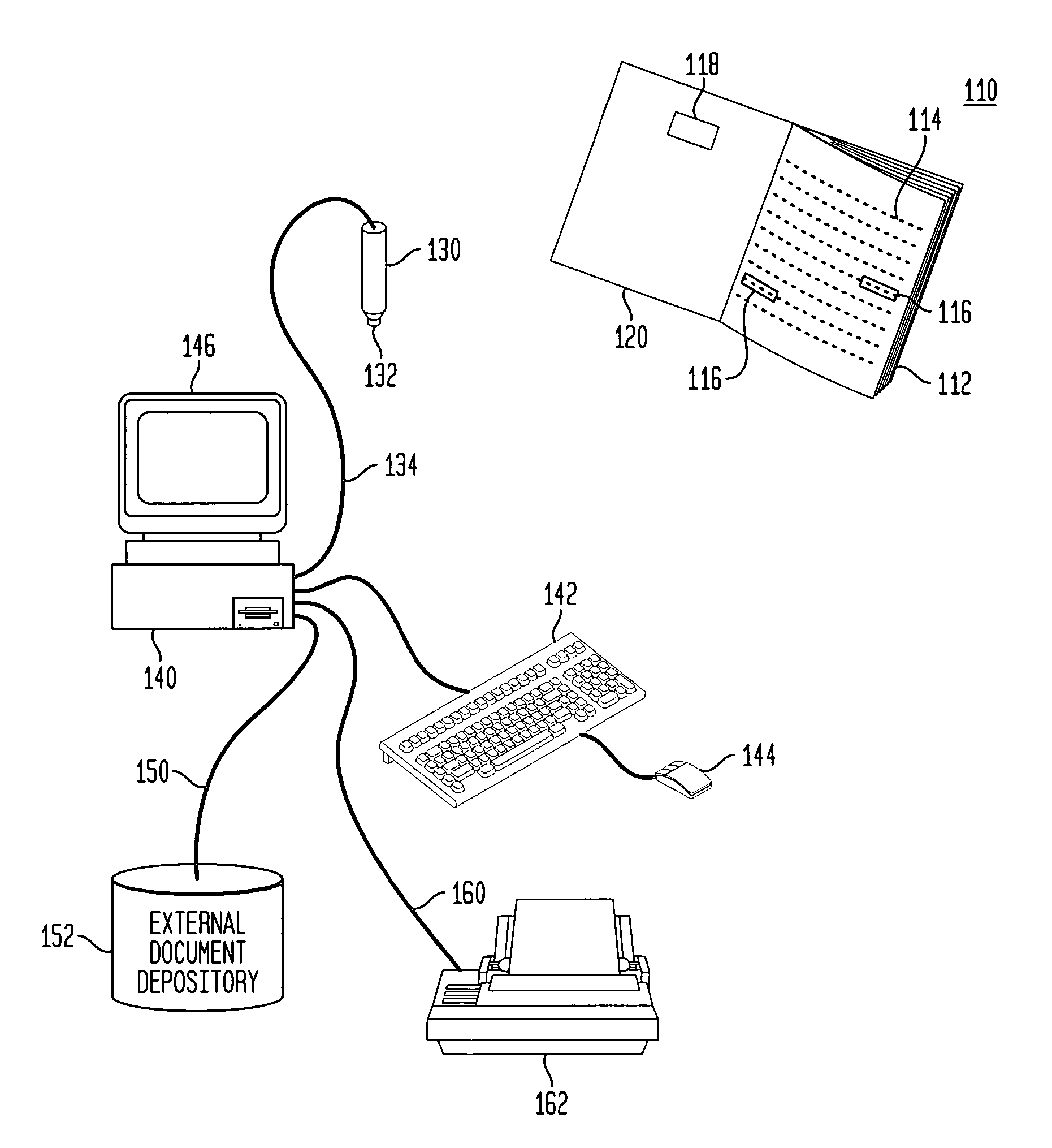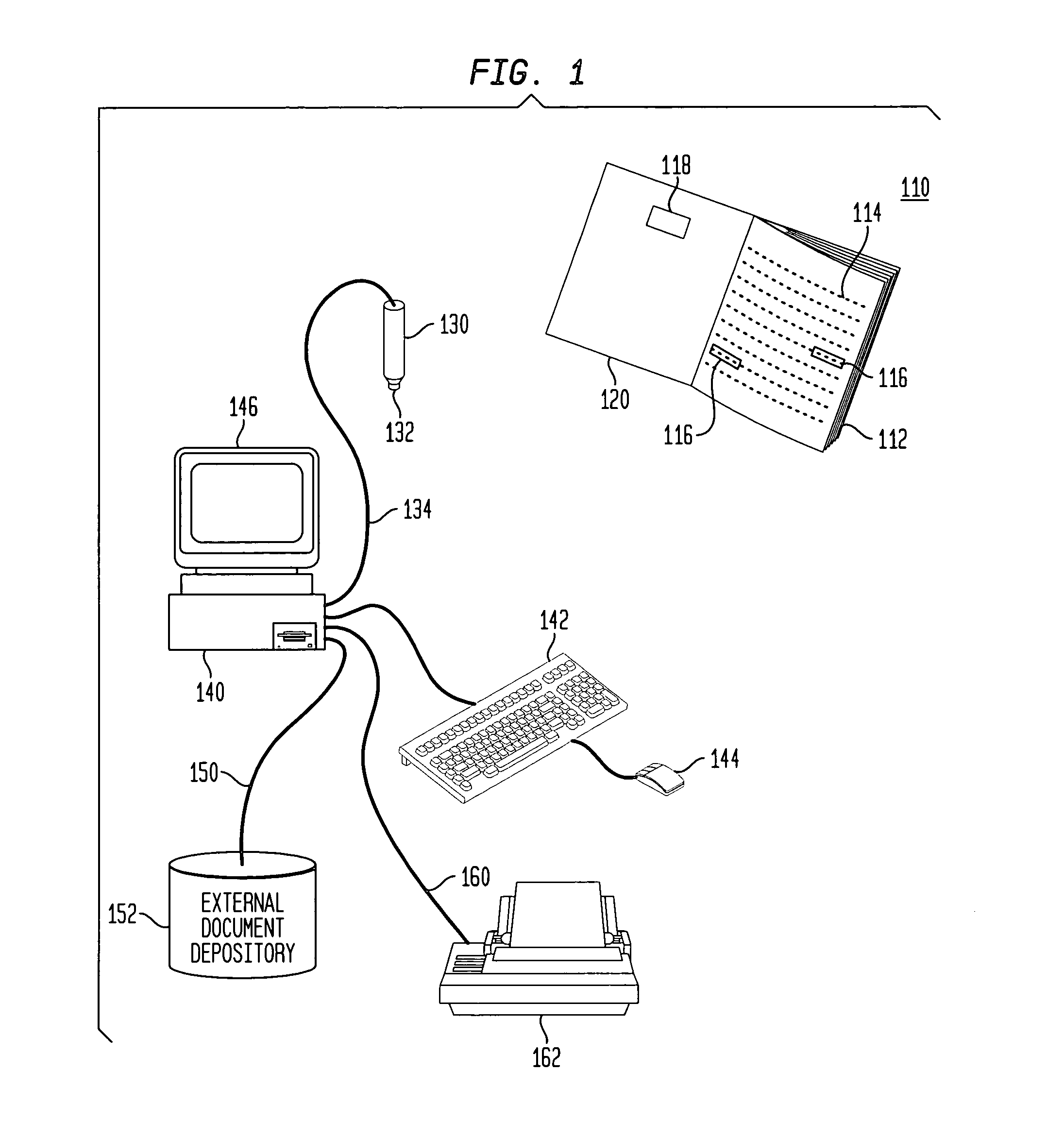Retrieval and manipulation of electronically stored information via pointers embedded in the associated printed material
- Summary
- Abstract
- Description
- Claims
- Application Information
AI Technical Summary
Benefits of technology
Problems solved by technology
Method used
Image
Examples
Embodiment Construction
[0019]In the method of the invention, the user is facilitated in obtaining information by use of the most convenient source, be that source in printed (e.g book) or electronic form. In general, the user obtains the majority of the information from a book or other paper-printed source, while more in-depth, related, or updated material is obtained from, and visualized on, some electronic medium (e.g. a computer display). The method of the invention accomplishes this goal by use of the hypertext paradigm from the electronic world to produce a “hyperbook” or other electronic index to printed information.
[0020]As seen in FIG. 1, an illustration of one embodiment of the system, a book, magazine, or other printed material or document 110, has one or more pages 112, containing areas of text 114. Particular areas of the text 114 are marked with one or more marking 116. Although the embodiment described discusses and shows solely text, it is understood that it can also contain tables, graphs,...
PUM
 Login to View More
Login to View More Abstract
Description
Claims
Application Information
 Login to View More
Login to View More - R&D
- Intellectual Property
- Life Sciences
- Materials
- Tech Scout
- Unparalleled Data Quality
- Higher Quality Content
- 60% Fewer Hallucinations
Browse by: Latest US Patents, China's latest patents, Technical Efficacy Thesaurus, Application Domain, Technology Topic, Popular Technical Reports.
© 2025 PatSnap. All rights reserved.Legal|Privacy policy|Modern Slavery Act Transparency Statement|Sitemap|About US| Contact US: help@patsnap.com



